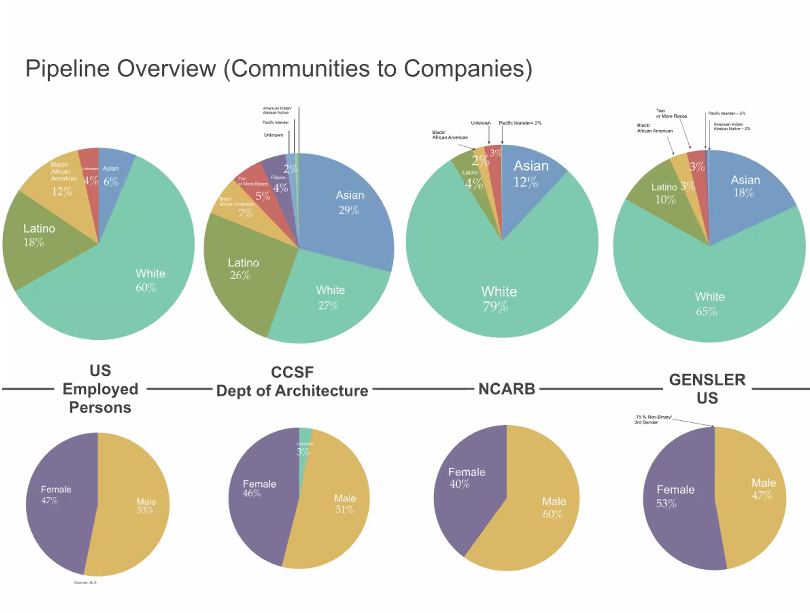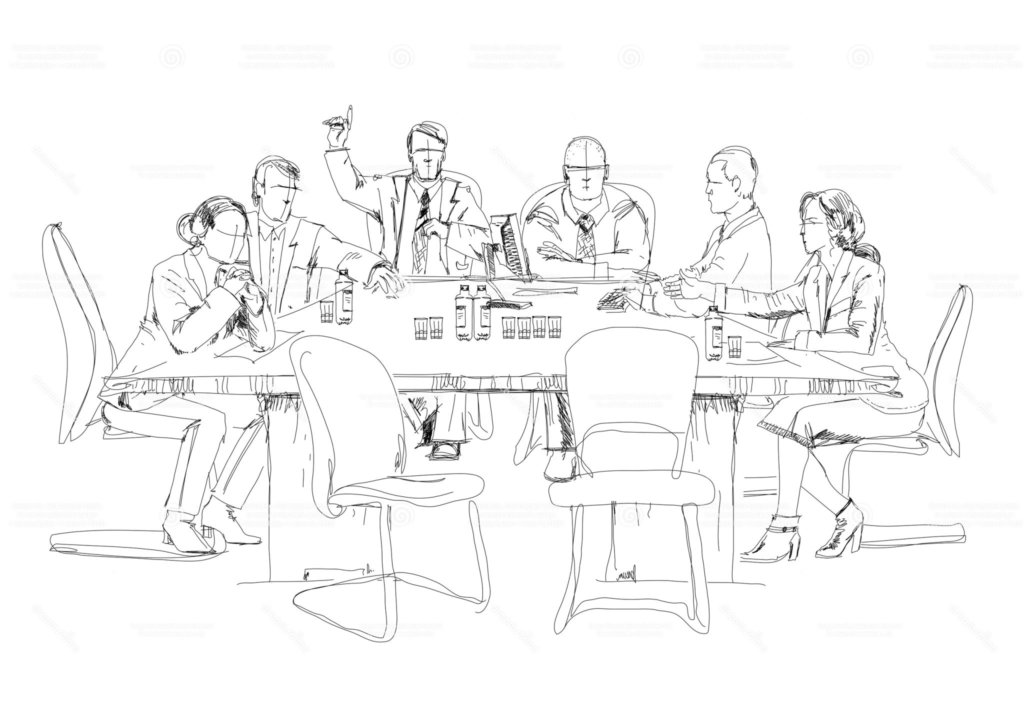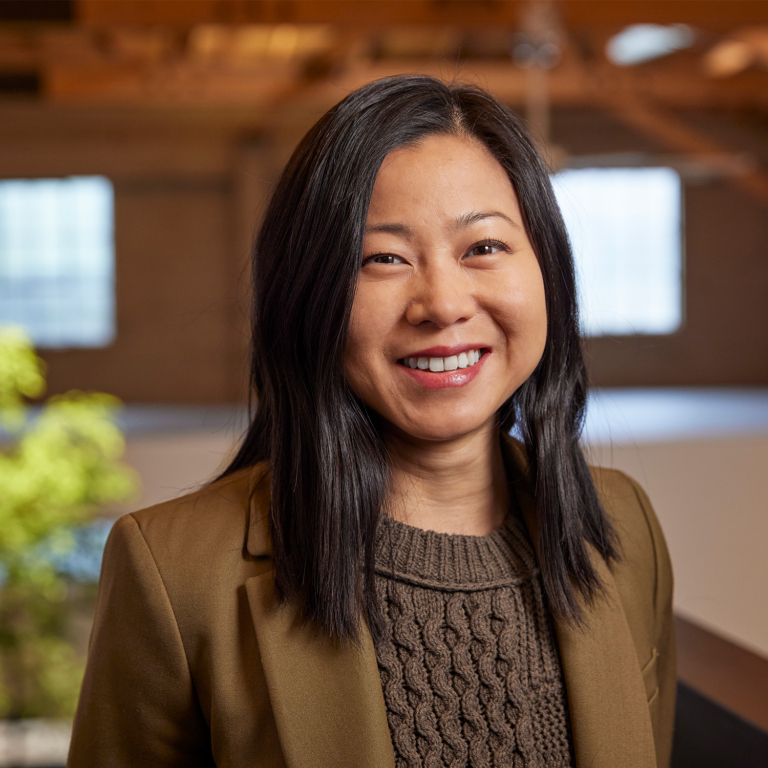Earlier this month, AIA San Francisco’s panel event, The Equitable Practice: Reimagining the Power Table, sought to trace the path to the Architecture and Design power table from a range of perspectives with a focus on creating firm cultures that are conducive to DEI (diversity, equity and inclusion).
WDA Director of Operations, Phoebe Lam, was joined by George X. Lin, Architecture Program Coordinator at the City College of San Francisco, Merla Salongcong, Associate and Regional HR Generalist at Gensler, and Prescott Reavis, the Founding Director of Kulima, a community design, planning and teaching practice rooted in equitable design and planning justice, and founder and director of SFNOMA’s Project Pipeline a decade old Architecture + Community Planning Camp for middle school students.
They all spoke to the challenges and opportunities around DEI and shared some of the best practices they are implementing to make DEI happen.

IDENTIFYING THE DISPROPORTIONS
AIA SF Moderator, Lisa Boquiren began the discussion by presenting a series of pie-charts illustrating the gap between diversity in broader society, design schools and firms, through licensure and employment where there is a more significant drop-off for the BIPOC community.
Acknowledging that the drop-off is an issue is a key first step. “That is why education at community level is so important,” said Prescott Reavis of Kulima. “We have to ask how we are serving communities and engaging with them. We have to create a profession that’s more reflective of who we are serving,” he said. “That means working with students as early as elementary school.”
ESTABLISHING THE PIPELINE
All panelists spoke to the importance of creating and maintaining the pipeline by which tomorrow’s designers can be encouraged and nurtured from an early age.
“With Project Pipeline, we want to make people aware of the role architecture has in shaping their community, and how to shape that process to benefit their community. Our goal is to cultivate spatial activists. It’s more than design – it’s about being a critical thinker and being able to solve problems.” Prescott said.
George X. Lin spoke to City College’s Free City program and how it is important for achieving DEI in architecture education. “Free City helps a lot of students discover architecture. Through our department students gain access to mentors, software, and continuing education. City College is a gateway to this profession.”

HAVE AN IMPACT
WDA and Gensler both spoke to how they offer exposure to the profession for young people through their internships and external programs.
“I didn’t feel prepared for my first job in architecture, or even that I belonged,” said Phoebe Lam of WDA. “School is more about thought process – they don’t expose you on how to apply that thought process. That disconnect between school and work can be quite jarring. More internships, more exposure, more understanding about the firm as a business and as a place that is open for lots of different people would have been helpful for me. To bridge that disconnect between school and work we have our interns sit in on firm-wide and client meetings to observe and give them exposure, and become less fearful of the process.”
“In terms of DEI, last year’s social injustices were a catalyst for us to put somethings in action. We had a lot of employees express their desire to contribute in this realm,” Phoebe continued. “We started by listening, and then formalized a program called Architects in Action, where we took a three-prong approach. First, we needed to learn, so we had biweekly internal conversations to discuss the issues and created an internal message board to crowd-source educational resources and actionable ideas. Second was local actions. We did an Arch Camp, which was a six-week externship – where we exposed high-schoolers to the field of architecture,” she said.
“The third thing was learning from others in the BIPOC design community. Since then, we have formalized this effort into one of our strategic initiative groups – which is part of our R&D arm. This year we are going to expand on some of our local actions and do some long-term planning, so we can do things in a more meaningful, impactful way.”
Moderator Lisa Boquiren reminds people that Gensler has a more equitable power structure because diversity starts at the top. As Merla Salongcong from Gensler notes, “Our co-CEO Diane Hoskins is one of only 520 registered female black architects in the US and holds an MBA. One of the business elements she oversees is talent management. That includes everything from talent pipeline, recruitment, student engagement, the internship experience, employee experience, employee retention and compensation. I mean, talk about being at the power table – she literally is at the power table of a global design firm.”
BE VULNERABLE
While the City College of San Francisco is already much more diverse than broader society, George, is still looking for ways they can improve. “I am at the early stages of developing an equity plan for our department,” he said. “I am trying to educate myself to really understand the systems of oppression in our society and identify how can I be a better ally to students of color.”
Phoebe echoed that sentiment, acknowledging that learning can be an uncomfortable process. “Being vulnerable and accepting what they don’t know is really how people can start to learn and grow. I’ve seen people who have put effort into learning about DEI and really made an impact. It’s been inspiring and it’s pushed me to learn more.”
Written by Neil Ginty, Architect
Contributors: Phoebe Lam, AIA; Wendy Osaki
